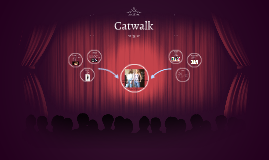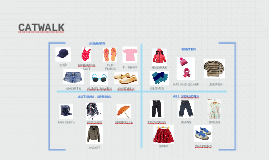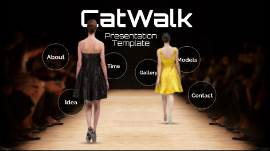Catwalk
Transcript: Catwalk Modeling Troupe INTRODUCTION DAY WELCOME WELCOME THE VERY FIRST MODELING TROUPE ON THE CAMPUS OF KUTZTOWN UNIVERSITY! ABOUT Us At the end of every year, around april, We have a fashion show at the school to show off everything we have been work for in practice. 6-7 Designers will come to our show and we will model their clothes on a runway in front of a crowd. We also include dancers, step teams from other school and even poets that come and perform also. https://www.instagram.com/p/B2QPNlRAWjW/ https://www.youtube.com/watch?v=F_s-cxwGwkI Practice Sundays Thursdays 7pm - 9m where confidence is born 12pm- 3pm Girls: Dress in comfy clothes and clothes you don’t mind messing up Heels are required Guys: Also comfy clothes and sneakers What we expect expectations We want you to enjoy what you're doing at all times and if there is ever a problem please be verbal and speak up! LIST OF RULES LIST OF RULES 1 4 3 2 5 Work hard at practice but also have fun while doing so BE CONFIDENT Remember that we are a family at the end of the day. Promote beauty no matter what you look like Real fashion designers look out for us (Stand out and Practice!) Eboard Eboard Members The ones who make it happen Aliyah ALiyah President Senior Criminal Justice Major Maya Vice President Senior Criminal Justice Major Maya Krystal Secretary Senior Communication Design Krystal Ana ANa Treasurer Junior Criminal Justice elizabeth Parliamentarian Senior Sociology elizabeth Sabrina Model Coordinator Junior Political Science Sabrina If you need anything or have any questions contact info contact Info Contact Info Aliyah Benjamin - (570) 817- 6159, abenj885@live.kutztown.edu Maya Rojas - (219) 771-4551, mroja703@live.kutztown.edu Krystal Honohan- (610) 858- 3629, khono867@live.kutztown.edu Elizabeth Mollo- (607) 765- 2542, emoll470470@live.kutztown.edu Ana Cruz- (484 838-9958, acruz916@live.kutztown.edu sabrina nunez-(570)-540-1810, snune258@live.kutztown.edu Icebreaker ICEBREAKER NAME My name is... Fun Fact

















